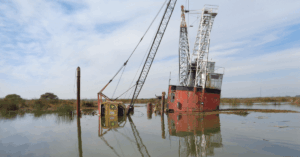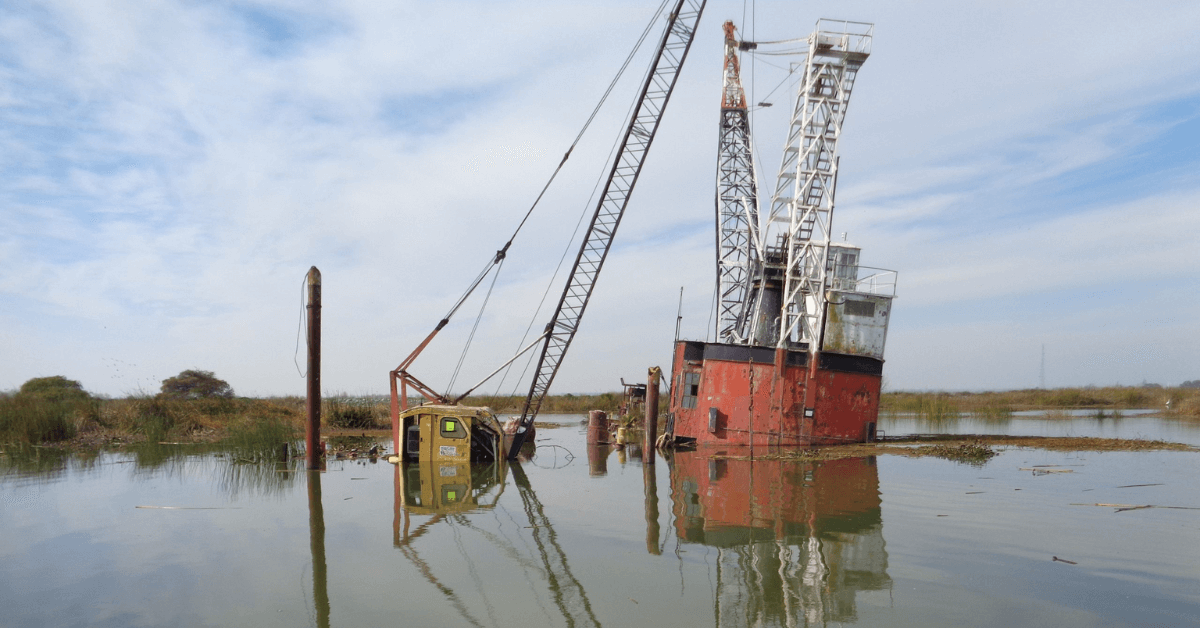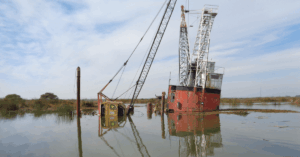
Captain Cook’s Famous Ship Identified In Rhode Island After Decades Of Mystery
June 9, 2025
International Fund For Animal Welfare Introduces Unique App To Prevent Ship-Whale Collisions
June 9, 2025

The State Lands Commission of California has carried out the largest-ever cleanup of abandoned commercial vessels at a single site in its history.
The operation took place at the Sevenmile Slough area in the Sacramento-San Joaquin Delta, at a location locally known as the Skarry site. This stretch of water had been heavily affected by rotting, abandoned vessels for years.
For decades, abandoned vessels have been a persistent issue across California’s waterways. However, the problem has been especially severe in the Delta region.
The Commission said that the site contained several large and deteriorating vessels that had remained untouched in the water, continuing to break down and causing concerns for public safety and the environment.
The Skarry site gets its name from the Skarry Brothers, who ran a marine construction company and dumped their vessels and equipment in the slough. The last known person responsible, Michael Skarry, passed away without taking care of the equipment, despite repeated attempts by different agencies to make him take action.
The abandoned fleet included several crane barges, two tugboats, smaller work and recreational boats, and other machinery. During the cleanup, divers even found another sunken vessel and more debris that wasn’t previously known.
Over the years, law enforcement and regulators had to return to the site multiple times due to the ongoing issues, which cost taxpayers heavily.
In 2022, the Commission removed the two tugboats from the site. This latest effort, which took place through May and early June, focused on removing all the remaining vessels and restoring the area.
Lieutenant Governor and Commission Chair Eleni Kounalakis said the Delta is one of California’s most important and loved waterways and needs to be protected. She added that abandoned vessels like these not only cause environmental damage but also endanger nearby communities. She praised the operation as a strong and necessary step to stop illegal dumping and safeguard natural resources.
The removal project was large in scale. Workers cleared nearly 1,000 tons of debris from the Delta. They also found and removed more than 1,000 gallons of diesel fuel from one of the largest crane barges, which had not been previously detected.
Two of the large barges were lifted directly out of the water and dismantled for disposal. One more barge was refloated and taken to Mare Island’s industrial shipyard for proper disposal. The salvage team recycled scrap metal and sent other debris to a landfill.
On average, about 14 people worked on-site every day during the operation. The team included a five-member dive crew, barge operators, and salvage experts. The Commission said their combined effort made the cleanup run efficiently and safely.
State Controller and Commissioner Malia M. Cohen called the project’s impact “stunning,” stating that the vessels had been decaying in the water for over a decade. She emphasised that the successful operation protected public safety, improved access to the area, helped the environment, and avoided long-term costs for taxpayers.
In the past two years, the agency completed a full inventory of derelict commercial vessels in the region. It removed nine high-priority vessels itself and oversaw the removal of another ten by urging the actual responsible parties to act.
According to the Commission, removing commercial vessels is a complex and expensive job, but it remains committed to protecting California’s waterways. The agency also acknowledged the critical role of its partner organizations in making the project possible.
“Abandoned vessels are a stubborn and costly problem, but working together helps us get real results,” said a Commission spokesperson. “We will continue to fight for clean, safe, and accessible waterways for everyone.”
Reference: California State Lands Commission
Source: Maritime Shipping News


